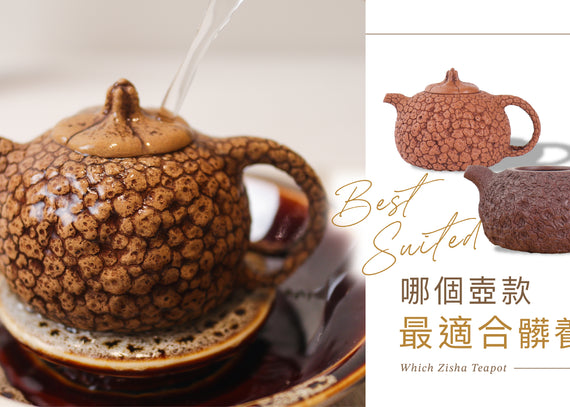很多剛接觸紫砂壺的用家都有這樣一個疑問:「調砂壺是不好的壺嗎?」其實經過調砂的紫砂壺並不是劣品,甚至很多以調砂工藝製作 的紫砂壺別具特色。想知道紫砂壺調砂有什麼優點?一起看下去吧!
調砂壺是什麼?
首先要了解清楚,紫砂壺的調砂是一種流傳已久的煉泥工藝,製壺師會在煉製泥料的時候加入一定比例的熟砂粒或半熟砂粒,而並非在泥料中加入化學物料或有害物質,因此調砂壺不屬於對人體有害的劣品。這個工藝能夠利用了砂粒的粗幼增加壺身表面的質感,也可以提高紫砂壺的成品率。
調砂可以分兩種,一種是同類型泥料調砂,意思是加入與本身泥料相同的砂粒煉製,這種調砂在製作朱泥壺時最常見。另外一種則是非同類泥料調砂,與前者相反,在本身的泥料上加入不同類型的砂粒進行調和,這種調砂通常會在紫泥壺中加入段泥砂粒,令壺身表面增加質感。
調砂紫砂壺有何優點?
1. 增加壺品美感
非同類泥料的調砂工藝可以在壺身上增加另一種顏色,更添美感。這種調砂方式多數常見於紫泥壺,在紫泥中調入淺色的段泥砂粒,燒製後壺身鋪滿如金砂一樣的砂粒,令壺品格調更華麗。而且生熟泥料的收縮程度不一,所以調砂工藝也能增加壺身的表面質感。
2. 降低製作成本
使用調砂工藝能夠提高成品率,從而降低製作成本。紫砂壺不同泥料都有不同的收縮程度,當中以朱泥的收縮比最大,製作的難度更大,需要的時間和成本也會較高。所以製作朱泥壺時,有些工藝師會在泥料中加入半熟的朱泥砂粒降低泥料的收縮程度,令燒製壺品的成功率提高,從而降低製作的成本。
3. 增強壺身透氣性
在製壺時加入砂料進行調砂,增加壺品的透氣性。紫砂泥料中含有石英成分是令紫砂壺形成雙氣孔的礦物之一,調砂加入砂料,增加了壺品裡的石英成分,這樣可以可以提高泥料裡氣孔的比重,有助增加壺品透氣性。
總括而言,調砂工藝是製作紫砂壺中一個常見的工藝,利用不同粗幼的砂粒製作別具特色的紫砂壺。一般調砂壺不涉及加入化學物料或有害物質,所以購壺時不用過於抗拒,也許您會遇到一把別緻的調砂壺!
建議閱讀:





